The Vanished Masterpieces: A Journey Through Stolen Art
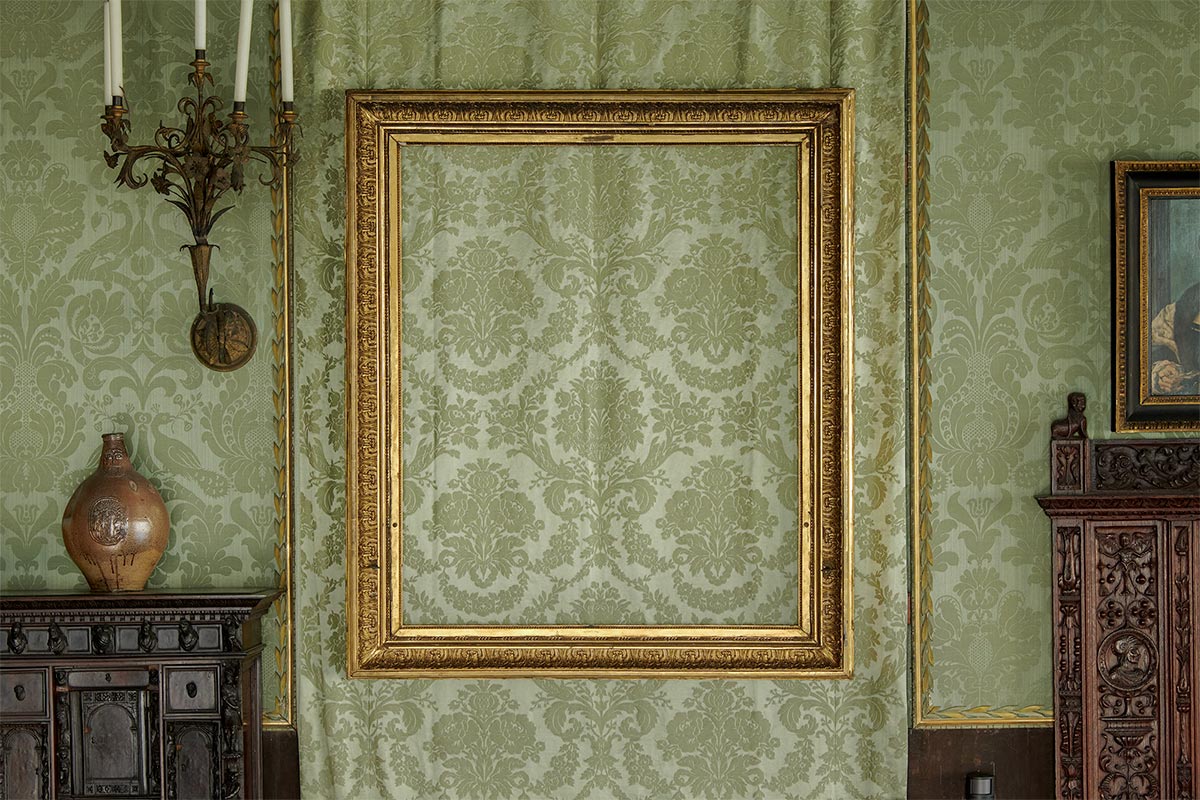
In the shadowy world where art and crime intersect, some of history's greatest masterpieces have vanished - snatched from the walls of museums and private collections, spirited away into the unknown. These stolen works, each a testament to human creativity and genius, now exist only in our collective memory and imagination. Join me as we explore ten of the most infamous art heists, delving into the stories behind these lost treasures and the enduring mysteries that surround them.
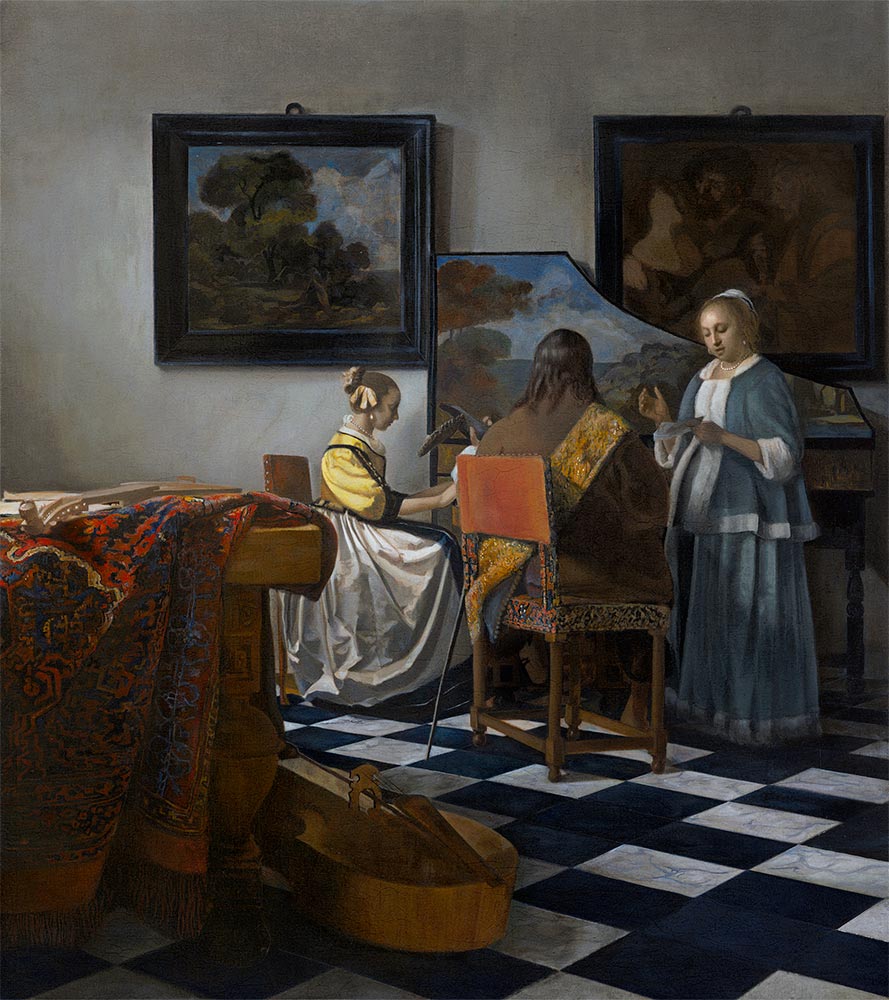
Vermeer's Silenced Concert
Johannes Vermeer's "The Concert" - ah, what a loss! This jewel of Dutch Golden Age painting, worth a cool $250 million, was nicked from Boston's Isabella Stewart Gardner Museum in 1990. Picture it: two blokes dressed as coppers, waltzing in and making off with thirteen priceless artworks. The cheek of it!
Vermeer's piece is a stunner - three figures caught in a moment of musical rapture, their faces lit by that ethereal Vermeer light. It's a painting that speaks volumes about the quiet joys of domestic life in 17th century Holland. But now? It hangs invisible, its music silenced, in some criminal's hidey-hole.
The empty frame still hangs in the museum - a ghostly reminder of what's been lost. It's like a perpetual silent scream, echoing through the halls of art history. Despite a whopping $10 million reward, "The Concert" remains stubbornly AWOL. One can't help but wonder: is it being enjoyed in secret by some art-loving crime lord, or has it met a more ignominious fate?
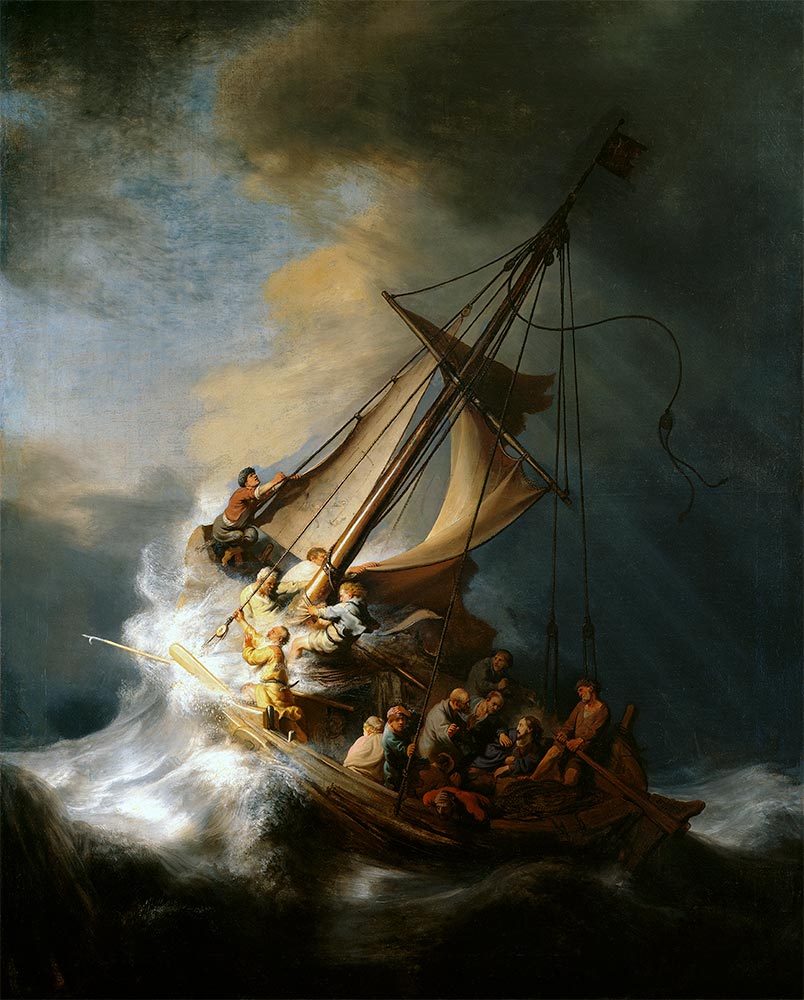
Rembrandt's Storm-Tossed Masterpiece
Talk about dramatic irony! Rembrandt's "The Storm on the Sea of Galilee" - his only seascape, mind you - was swept away in the same Gardner heist. It's a painting that practically roars off the canvas, with Christ calming the tempest as the disciples cling to their storm-battered boat.
The thieves who nabbed it spent a leisurely 81 minutes cutting canvases from frames. 81 minutes! That's longer than it takes to watch most modern films, for heaven's sake. One can almost picture them, these art bandits, pausing to admire Rembrandt's brushwork as they committed their crime.
This painting's absence leaves a Rembrandt-shaped hole in the art world. It's a bit like losing the only recording of Beethoven's "Tempest" sonata - we're left with descriptions, with memories, but the raw power of the original is lost to us. The empty frame in the Gardner Museum stands as a kind of maritime distress signal, calling out across the years for the return of this storm-tossed masterpiece.
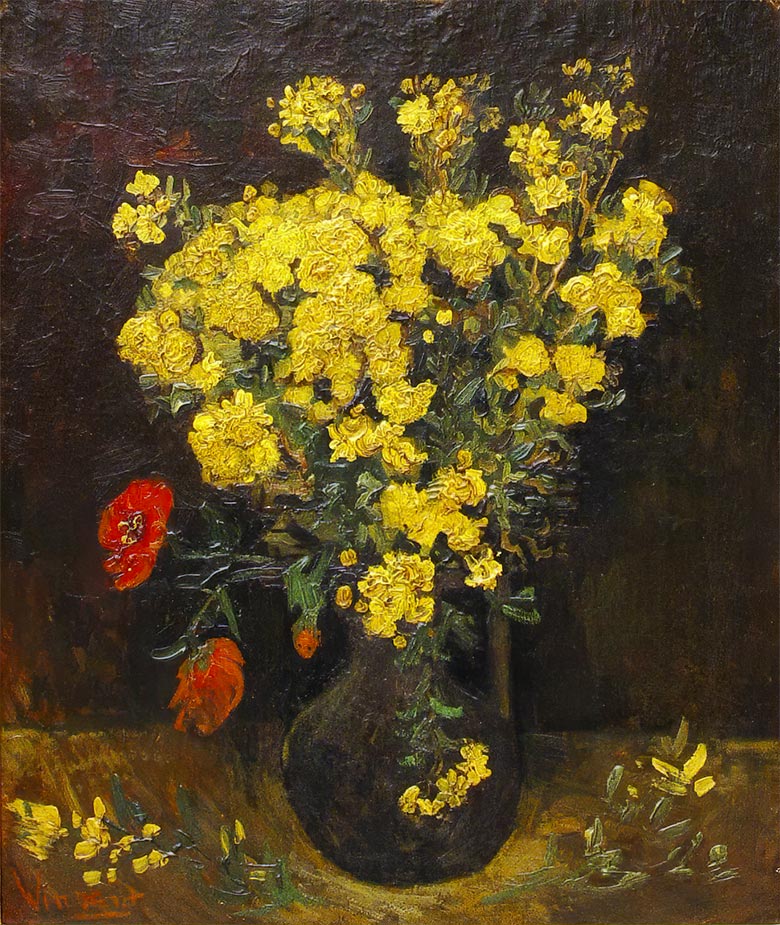
Van Gogh's Twice-Pilfered Poppies
Oh, Vincent! Even in death, your works can't escape drama. "Vase with Poppies" - or "Poppy Flowers" if you're feeling poetic - has been pinched not once, but twice from Egypt's Mohamed Khalil Museum. It's as if the painting itself has a penchant for adventure.
First nicked in '77, it took a year-long holiday in Kuwait before being returned. But in 2010, some light-fingered ne'er-do-well decided the painting needed another outing. Cut from its frame in broad daylight - the sheer audacity! - it vanished into the ether.
The real kicker? Only seven out of 43 security cameras were working, and the alarms were about as useful as a chocolate teapot. It's enough to make you weep. This vibrant still life, with its cheerful yellow blooms and those iconic red poppies, is now nothing more than a memory and a cautionary tale about museum security.
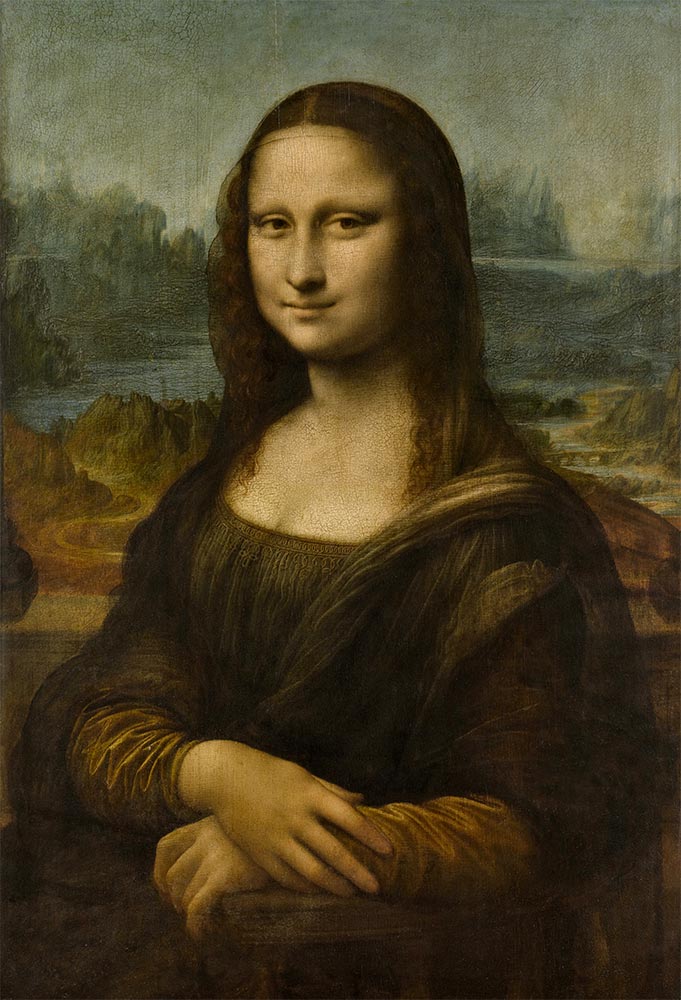
Mona Lisa's Grand Adventure
Ah, La Gioconda! The most famous painting in the world, and yet she once went walkabout for two whole years. In 1911, an Italian handyman named Vincenzo Peruggia decided Lisa needed a change of scenery, smuggling her out under his coat like a loaf of stale baguette.
The audacity of the man! He kept her in his poky Parisian flat, probably making small talk with her enigmatic smile over his morning coffee. When he finally tried to flog her to an Italian art dealer, the game was up. Poor Vincenzo - he thought he was being a patriot, returning her to her "rightful" home in Italy.
The whole debacle turned Mona from a respected artwork into a global celebrity. She went from demure Renaissance lady to the Kim Kardashian of the art world overnight. Now she sits behind bulletproof glass, smirking at the crowds. One can't help but wonder if she's planning her next great escape.
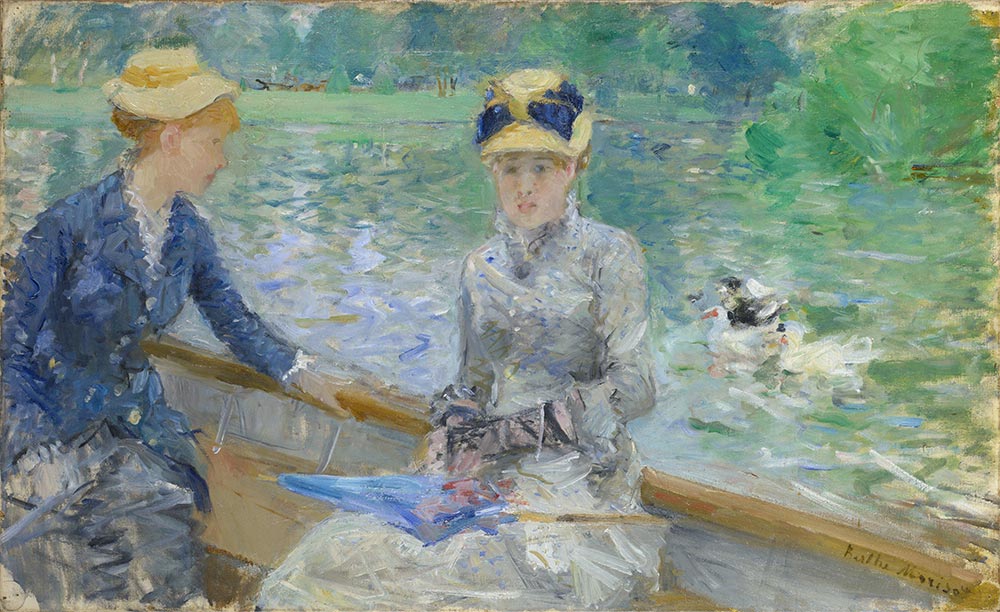
Morisot's Summer Escapade
Berthe Morisot's "Summer's Day" - now there's a painting with a rebellious streak! This shimmering slice of Impressionist bliss became an unlikely pawn in an Anglo-Irish tug-of-war. Picture it: two Irish students, full of patriotic fervor (and probably a fair bit of Guinness), decide to liberate the painting from London's Tate Gallery in 1956.
It wasn't about money, oh no. This was art theft as political statement, a painted protest against the Hugh Lane bequest kerfuffle. For a few days, "Summer's Day" went on an unscheduled holiday, causing no end of red faces at the Tate.
The painting itself is a beauty - two elegant ladies in a rowboat, all dappled sunlight and Morisot's magical brushwork. It's the kind of image that makes you long for lazy summer afternoons and picnics by the lake. Now, thanks to its little adventure, it's not just a masterpiece of Impressionism, but a footnote in the grand narrative of Anglo-Irish relations. Who says art can't change the world?
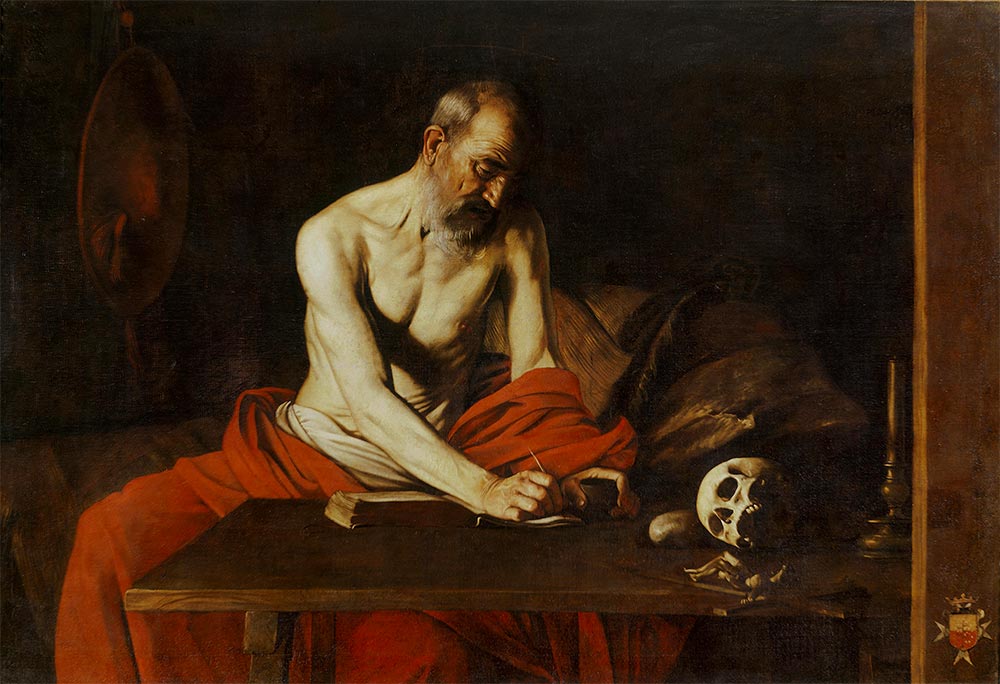
Caravaggio's Purloined Saint
Caravaggio's "Saint Jerome Writing" - now there's a painting with as much drama in its history as in its creation. Stolen in 1984 from a Maltese cathedral, this moody masterpiece spent three years in the artistic wilderness before being dramatically recovered.
Imagine the scene: Saint Jerome, caught in that intense Caravaggio chiaroscuro, his quill poised over parchment, brow furrowed in holy concentration. And then - poof! - whisked away by some light-fingered rapscallion with more greed than sense.
The theft and recovery of this painting reads like a pot-boiler novel. Undercover ops, international police cooperation - it's enough to make one's head spin. And through it all, old Jerome keeps scribbling away, oblivious to the hullabaloo. It's a testament to Caravaggio's genius that even after its adventure in the criminal underworld, the painting still packs the same emotional punch. Art 1, Criminals 0.

The Scream's Double Disappearing Act
Edvard Munch's "The Scream" - now there's a painting that can't seem to stay put. Twice it's been nicked, as if it's trying to live up to its own reputation for existential angst. First in '94, when some cheeky burglars took advantage of Norway's Olympic celebrations to make off with it. Then again in 2004, when armed robbers decided to up the ante.
It's almost comical, isn't it? This icon of human anxiety, this painted panic attack, causing such real-world drama. One can almost imagine the painting itself letting out that famous howl as it's whisked away by balaclava-clad art enthusiasts.
Both times it was recovered, thank the art gods. But the whole saga has only added to the painting's mystique. Now, when we look at that screaming figure on the bridge, we're not just seeing Munch's vision of modern alienation - we're seeing a survivor, a two-time escapee from the clutches of the art underworld. It's enough to make anyone scream.
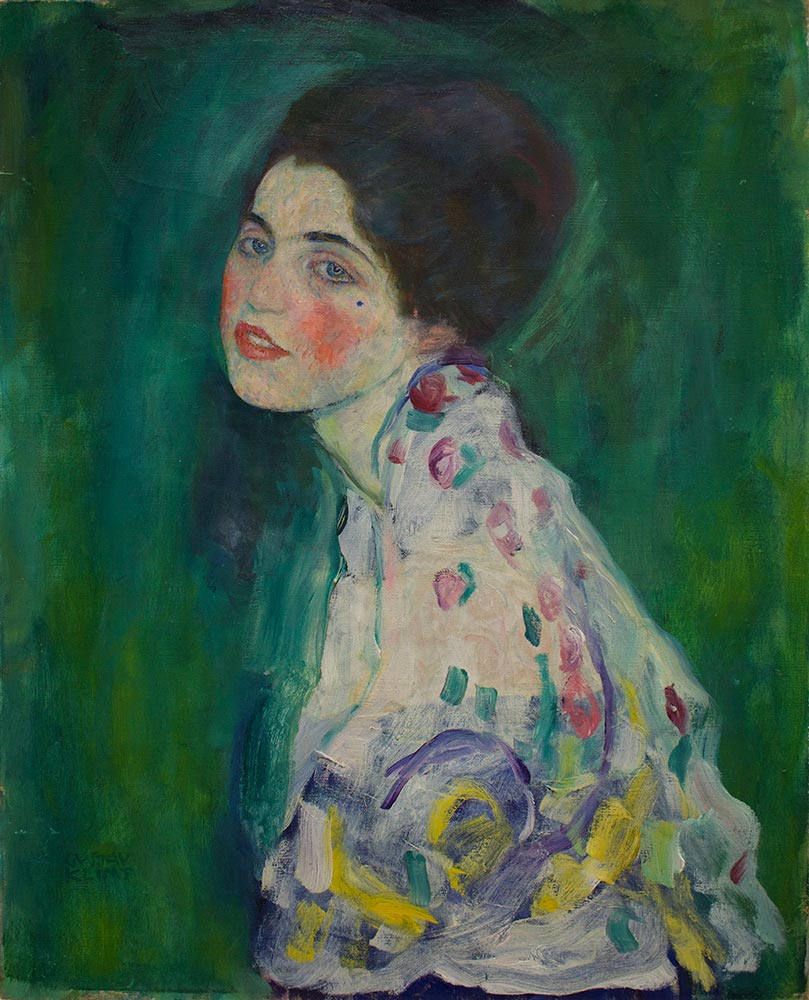
Klimt's Hide and Seek Champion
Gustav Klimt's "Portrait of a Lady" - now there's a painting that knows how to play hard to get. Stolen from Italy's Ricci Oddi Gallery in '97, it decided to take an extended staycation... inside the very same gallery!
For 23 years, art lovers mourned its loss. Theories abounded - was it an inside job? A forgery? Had it eloped with a Picasso? But no, it turns out our lady was just having a kip in a secret cavity in the gallery wall, snug as a bug in a rug.
The groundskeeper who found it must have thought he was hallucinating. Imagine - you're clearing ivy, and boom! There's a $60 million painting taking a nap behind the wisteria. It's like finding the Holy Grail while doing the gardening.
The whole affair has more twists than a Klimt tree of life. Was it returned by the thieves? Did it crawl there of its own accord? We may never know. But one thing's for sure - this "Portrait of a Lady" has cemented its place as the hide and seek champion of the art world.
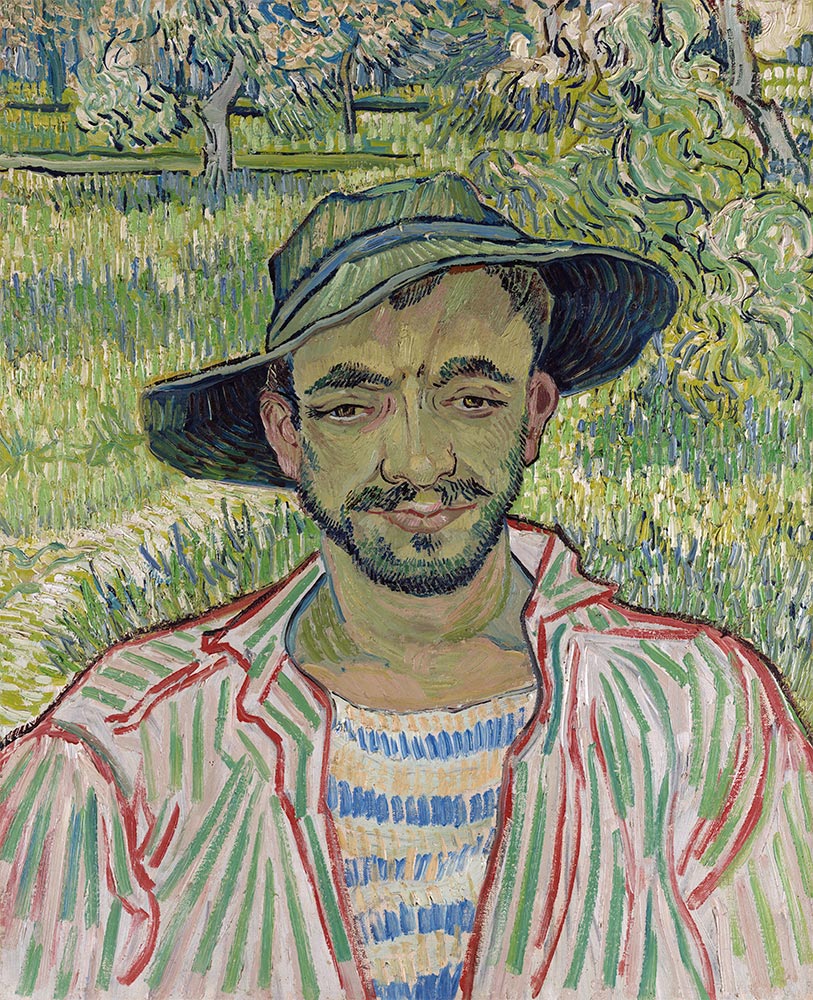
Van Gogh's Gardener Goes AWOL
Ah, poor Vincent. Even in death, his works can't catch a break. "The Gardener," painted during his stay at the Saint-Paul asylum, was supposed to be safe and sound in Rome's National Gallery of Modern Art. But in 1998, some enterprising art lovers (read: thieves) decided it needed a change of scenery.
Picture the scene: three armed blokes swanning into the gallery, overpowering guards, and making off with not one, not two, but three masterpieces. It's like "Ocean's Eleven," but with more berets and fewer casinos.
The painting itself is classic van Gogh - all swirling brushstrokes and vivid colors, capturing a moment of quiet contemplation in the asylum gardens. For months, art lovers mourned its loss. Where was our gardener? Was he pruning roses for some criminal mastermind?
Thankfully, this tale has a happy ending. The painting was recovered, found wrapped in blankets under a bed like a runaway teenager. One can only imagine the stories it could tell of its time on the lam. Now it's back where it belongs, probably with a few extra security guards keeping a watchful eye.
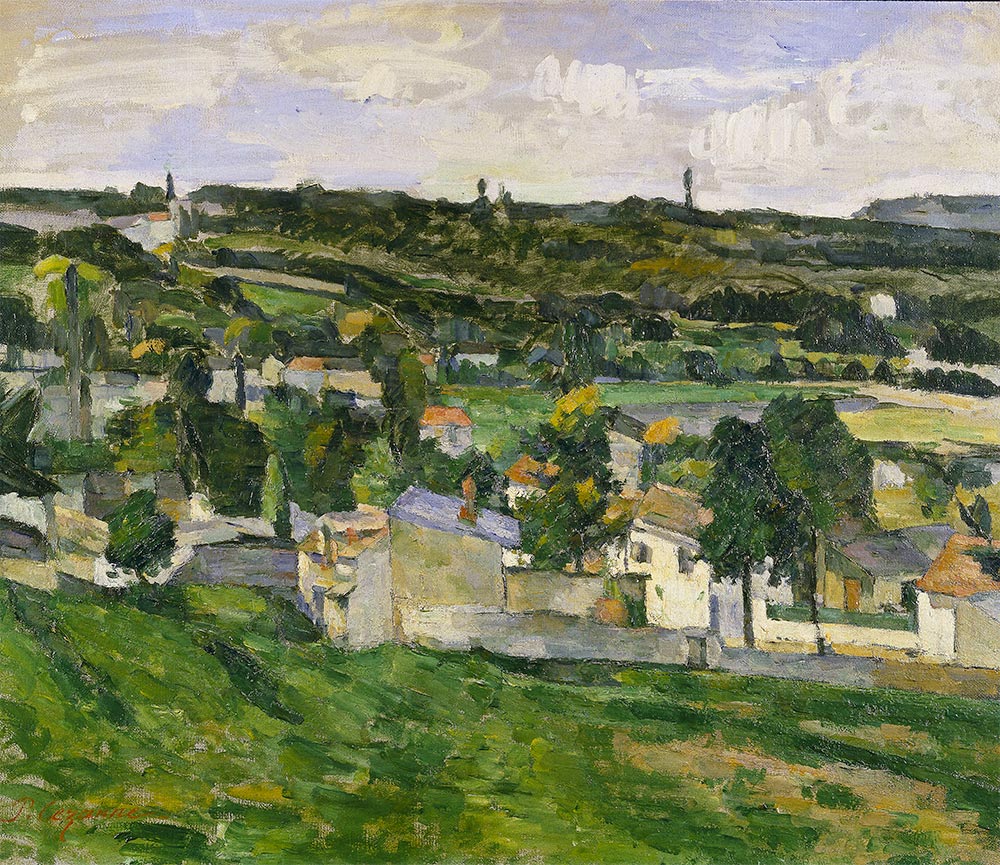
Cézanne's Millennial Misadventure
Paul Cézanne's "View of Auvers-sur-Oise" picked a hell of a time to go missing - New Year's Eve, 1999. While the world was gearing up for the new millennium, some crafty buggers were scaling the walls of Oxford's Ashmolean Museum.
It's almost poetic, isn't it? As fireworks lit up the sky and champagne corks popped, these art bandits were shimmying down ropes, cutting through skylights, and making off with a priceless masterpiece. Talk about ringing in the new year with a bang.
The painting itself is quintessential Cézanne - a landscape that seems to breathe and pulse with life, each brushstroke a small revolution in the history of art. And now? It's out there somewhere, perhaps gracing the wall of some Bond villain's secret lair.
Despite a massive manhunt and a few false starts, "View of Auvers-sur-Oise" remains stubbornly AWOL. It's a sobering reminder that even as we march into the future, the ghosts of art crimes past continue to haunt us.
Conclusion
As we've journeyed through these tales of artistic derring-do, one thing becomes clear: great art has a life of its own, often beyond the canvas. These stolen masterpieces, though lost to public view, live on in our collective imagination, their very absence a testament to their enduring power and value.
While we may lament the loss of these irreplaceable works, there's a silver lining for art enthusiasts. Thanks to the wonders of modern technology, many of these vanished masterpieces can be resurrected - not in their original form, but as museum-quality reproductions. Companies like TOPofART offer oil reproductions that capture the essence of these lost works, while TopArtPrint brings them back to life as giclée prints on canvas.
These reproductions, while not replacing the originals, allow us to experience something of the magic that made these works targets for theft in the first place. They serve as a reminder of what we've lost, yes, but also of the enduring power of art to captivate, inspire, and provoke - even when the original is nothing more than a memory and an empty frame.
So, dear art lovers, while we continue to hope for the miraculous reappearance of these stolen treasures, take heart. The spirit of these masterpieces lives on - in our museums, in our memories, and perhaps even on your own wall, courtesy of the fine art of reproduction. After all, isn't that what great art is all about? Not just the physical object, but the ideas, the emotions, the spark of genius that continues to ignite our imaginations, stolen or not.

Comments